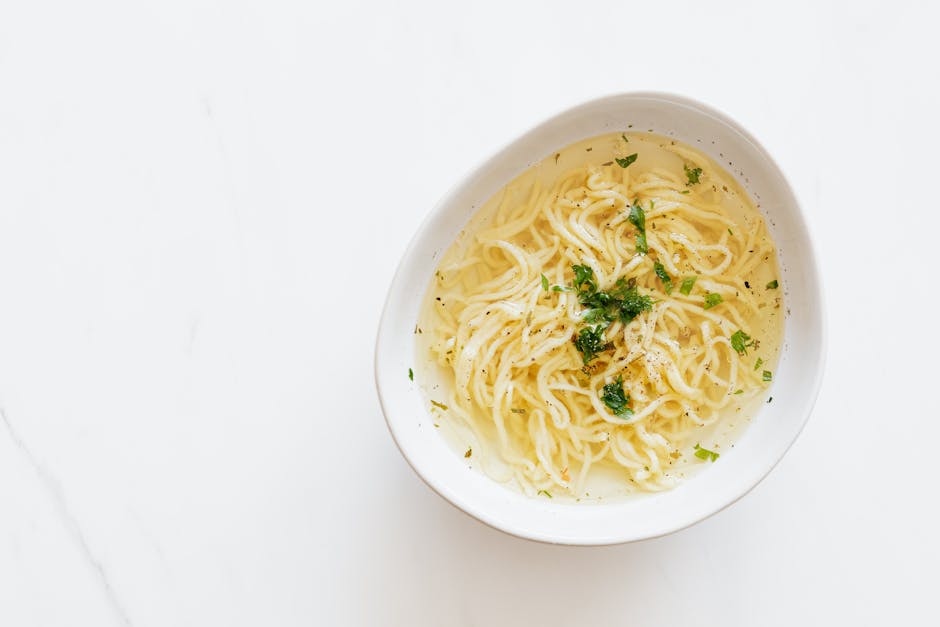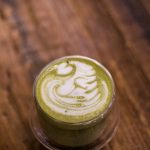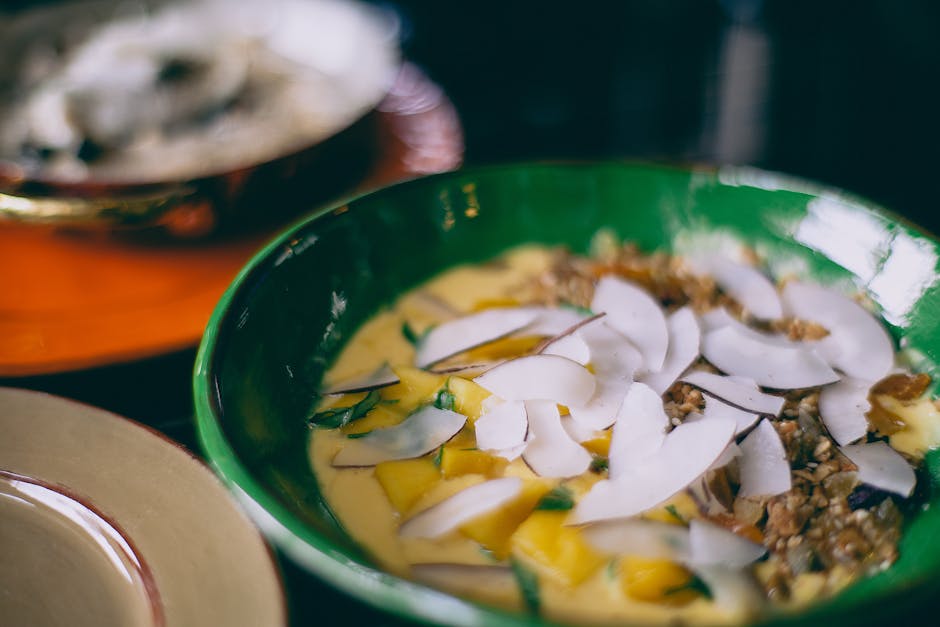Prepare your taste buds for a culinary journey to Japan with our Homemade Teriyaki Chicken! This beloved dish, a staple of Japanese cuisine, boasts a rich history and cultural significance far beyond its delicious simplicity. While the exact origins are debated, teriyaki’s story is largely intertwined with the introduction of soy sauce to Japan centuries ago. Early forms of teriyaki likely involved grilling fish or meat with a simple sauce of soy sauce, mirin (sweet rice wine), and sake, reflecting the resourceful use of readily available ingredients. The development of the specific teriyaki we know and love today, however, is a more recent phenomenon, gaining significant popularity in the 20th century.
The word teriyaki itself is a combination of two Japanese words: teri, meaning glossy or luster, and yaki, meaning grilled or broiled. This perfectly captures the essence of the dish: the beautifully glazed, glistening surface of the chicken achieved through the careful cooking process. The glossy sheen is a direct result of the sugars caramelizing in the sauce during cooking, creating a visually appealing and intensely flavorful coating. Interestingly, while chicken is now a common protein choice, teriyaki was initially more frequently associated with fish, particularly eel and tuna. The versatility of the teriyaki sauce, however, has allowed it to adapt and embrace a wide variety of meats and vegetables.
Teriyaki chicken’s rise to global fame is a testament to its deliciousness and adaptability. It’s estimated that teriyaki-flavored products generate billions of dollars annually worldwide, showcasing its widespread appeal. This global popularity has led to many variations, with regional twists and adaptations found across the globe. You can find teriyaki chicken in high-end restaurants and casual eateries alike, highlighting its ability to transcend culinary boundaries. Beyond its commercial success, teriyaki chicken also holds cultural significance in Japan, often featured in celebrations and family meals, representing a balance of sweet and savory flavors that resonate deeply with Japanese culinary traditions. It’s more than just a dish; it’s a taste of Japanese history and hospitality.
This recipe aims to capture the authentic essence of teriyaki chicken, offering a homemade version that allows you to control the ingredients and savor the rich flavors without any artificial additives. Get ready to experience the magic of teriyaki – a culinary journey in every bite!
Ingredients and Measurements
This recipe for Homemade Teriyaki Chicken yields approximately 4 servings of succulent, flavorful chicken. Accurate measurements are crucial for achieving the perfect balance of sweet and savory in your teriyaki sauce. We’ll be using both weight and volume measurements where appropriate to accommodate different cooking styles and preferences. Always use a kitchen scale for the most accurate results, especially when measuring the soy sauce and sugar.
For the Chicken:
- 1.5 lbs (680g) boneless, skinless chicken thighs, cut into 1-inch cubes. Chicken thighs are recommended for their juiciness and flavor. Chicken breasts can be substituted, but they tend to dry out more easily. Ensure the chicken is cut into uniform pieces for even cooking.
- 1 tbsp cornstarch. This helps to create a slightly thicker and more flavorful glaze.
- 1 tsp salt. Adjust to your taste preference. Remember that the teriyaki sauce itself is also salty.
- ½ tsp black pepper. Freshly ground black pepper is always best.
For the Teriyaki Sauce:
- ½ cup (120ml) soy sauce (low sodium preferred). Using low-sodium soy sauce allows you to control the saltiness better.
- ¼ cup (50g) granulated sugar. Granulated sugar is ideal for dissolving smoothly into the sauce. Brown sugar can be substituted for a deeper, molasses-like flavor.
- ¼ cup (60ml) mirin (sweet rice wine). Mirin adds a subtle sweetness and depth of flavor. If unavailable, a teaspoon of rice vinegar can be added.
- 2 tbsp sake (Japanese rice wine, optional). Sake adds another layer of complexity to the flavor profile. If you don’t have sake, you can omit it without significantly impacting the taste.
- 2 tbsp honey (or maple syrup). Honey provides a natural sweetness and helps to balance the savory notes of the soy sauce. Maple syrup offers a slightly different flavor profile.
- 1 tbsp grated fresh ginger. Fresh ginger is essential for a vibrant and aromatic sauce. Use a fine grater for the best results.
- 2 cloves garlic, minced. Freshly minced garlic provides a pungent and delicious aroma and flavor.
- 1 tbsp cornstarch (for thickening, if needed). This is optional and helps to achieve a thicker glaze, especially if you prefer a less runny sauce. Mix this with a tablespoon of cold water before adding to the sauce.
Important Note: The quantities provided are guidelines. Feel free to adjust the amounts of sugar, honey/maple syrup, and ginger to suit your personal taste preferences. Start with the given measurements, and then adjust to your liking in subsequent batches. For example, if you prefer a sweeter teriyaki sauce, increase the amount of sugar or honey. If you prefer a spicier version, add a pinch of red pepper flakes to the sauce.
Professional Recommendation: To ensure the chicken cooks evenly and the sauce thickens properly, it’s recommended to use a non-stick skillet or wok. This will prevent sticking and make it easier to achieve a beautiful, glossy finish on the chicken.
Marinade Preparation
Creating a flavorful teriyaki marinade is crucial for tender, juicy, and intensely delicious chicken. This recipe yields enough marinade for approximately 1.5 lbs of chicken thighs or breasts, but you can easily double or triple it depending on your needs. Remember to always marinate your chicken in the refrigerator for optimal flavor and food safety.
Begin by whisking together the base of your marinade in a medium-sized bowl. This involves combining ¼ cup of soy sauce (low sodium preferred for better flavor control), ¼ cup of mirin (sweet rice wine, adds sweetness and depth), and 2 tablespoons of sake (optional, adds a subtle dryness and complexity). If you don’t have sake, you can substitute with an additional 2 tablespoons of mirin or dry sherry.
Next, we’ll build the savory and umami notes. Add 2 tablespoons of brown sugar to the mixture. This provides the characteristic sweetness of teriyaki sauce. You can adjust the amount of brown sugar based on your preferred level of sweetness. For a less sweet marinade, use 1 tablespoon. For extra sweetness, use 3 tablespoons. Granulated sugar can be substituted, but brown sugar lends a richer flavor.
Now, let’s introduce some depth and complexity. Add 2 cloves of minced garlic and 1 tablespoon of grated fresh ginger. Both garlic and ginger are essential components of a classic teriyaki marinade. For a stronger garlic or ginger flavor, increase the amount accordingly. If using pre-grated ginger, use about ½ tablespoon as it is typically more concentrated than freshly grated ginger.
Finally, we’ll incorporate some acidity to balance the sweetness and enhance the overall flavor profile. Add 1 tablespoon of rice vinegar. This brightens the marinade and helps to tenderize the chicken. Apple cider vinegar can be used as a substitute, but it will impart a slightly different flavor profile.
Once all the ingredients are combined, whisk vigorously to ensure that the sugar is fully dissolved and the marinade is well blended. Taste the marinade and adjust the seasoning as needed. You may want to add more soy sauce for saltiness, more brown sugar for sweetness, or more rice vinegar for acidity. The perfect marinade is a matter of personal preference.
Once you’re satisfied with the flavor profile, pour the marinade over your chicken and ensure that all pieces are thoroughly coated. Seal the container tightly and refrigerate for at least 30 minutes, or preferably for 2-4 hours to allow the chicken to fully absorb the marinade’s flavors. For even more tender chicken, marinating overnight is recommended. Remember to never leave marinated chicken at room temperature for extended periods.
Chicken Preparation
The success of your homemade teriyaki chicken hinges on properly preparing the chicken. We’ll be using boneless, skinless chicken thighs for this recipe, as they offer the best balance of flavor, tenderness, and moisture. You can, however, substitute boneless, skinless chicken breasts if preferred, but be mindful that they tend to dry out more easily, so adjust cooking times accordingly.
Begin by thawing your chicken completely if frozen. Never cook chicken from frozen, as this can lead to uneven cooking and potential food safety hazards. The safest method is to thaw it in the refrigerator overnight. Alternatively, you can thaw it using the defrost setting on your microwave, following the manufacturer’s instructions carefully.
Once thawed, pat the chicken thighs dry with paper towels. This is a crucial step. Excess moisture on the surface of the chicken will prevent proper browning and lead to a less flavorful, potentially steamed, final product. Thoroughly drying the chicken is key to achieving a beautiful sear.
Next, we’ll cut the chicken into bite-sized pieces, approximately 1-1.5 inches in size. Consistency in size ensures even cooking. If the pieces are too large, the centers might remain undercooked while the outsides burn. If they’re too small, they may overcook and become dry. Aim for uniformity for optimal results.
Now, it’s time to season the chicken. For 1.5 lbs of chicken thighs, we’ll use the following: 1 tablespoon of cornstarch, 1 teaspoon of salt, and ½ teaspoon of black pepper. Cornstarch is crucial here, not only as a thickening agent for the teriyaki sauce later, but also aids in browning and creating a crispy exterior. Gently toss the chicken pieces in the cornstarch mixture, ensuring each piece is evenly coated. This helps the teriyaki sauce adhere properly and contributes to a richer flavor.
Finally, before moving on to the cooking process, consider your marinade strategy. While this recipe doesn’t strictly call for a marinade, a quick 15-30 minute marination in a small amount of soy sauce (about 1 tablespoon per pound of chicken) can enhance flavor penetration. If marinating, ensure you do so in the refrigerator to prevent bacterial growth. After marinating (if chosen), gently pat the chicken dry again before proceeding to the next step.
Proper chicken preparation is the foundation for delicious teriyaki chicken. By following these steps diligently, you’ll ensure a flavorful, tender, and perfectly cooked dish every time. Remember, attention to detail in this stage will significantly impact the final outcome.
Cooking the Chicken (e.g., Pan-frying, Grilling, Baking)
This section details three popular methods for cooking your teriyaki chicken: pan-frying, grilling, and baking. Choose the method that best suits your equipment and preferences. Regardless of your chosen method, ensure your chicken is cooked to an internal temperature of 165°F (74°C) to guarantee safety and optimal tenderness.
Pan-frying: This method delivers a beautiful sear and crispy skin. Begin with 1.5 lbs of boneless, skinless chicken breasts, cut into 1-inch thick pieces. Season generously with salt and pepper. Heat 2 tablespoons of vegetable oil in a large skillet over medium-high heat. Once the oil shimmers, carefully place the chicken pieces in a single layer, avoiding overcrowding. Avoid moving the chicken for at least 3-4 minutes to allow a good sear to develop. After searing, flip the chicken and cook for another 3-4 minutes per side, or until cooked through. Reduce the heat to medium if the chicken browns too quickly. Once cooked, remove the chicken from the skillet and set aside. You can then proceed with the teriyaki sauce.
Grilling: Grilling imparts a smoky flavor to the chicken. Prepare your grill to medium-high heat. Again, using 1.5 lbs of boneless, skinless chicken breasts, cut into 1-inch thick pieces, season generously with salt and pepper. Lightly oil the grill grates to prevent sticking. Place the chicken pieces on the preheated grill, ensuring they are not overcrowded. Grill for 4-5 minutes per side, or until cooked through and nicely charred. Remember to adjust cooking time based on the thickness of your chicken pieces and the heat of your grill. Use tongs to flip the chicken carefully. Once cooked, remove the chicken from the grill and set aside for the teriyaki sauce application.
Baking: Baking offers a hands-off approach, perfect for larger batches. Preheat your oven to 400°F (200°C). Use a baking sheet lined with parchment paper for easy cleanup. For this method, you can use whole boneless, skinless chicken breasts (approximately 1.5 lbs) or cut them into 1-inch pieces. Season generously with salt and pepper. Arrange the chicken pieces in a single layer on the prepared baking sheet. Bake for 20-25 minutes, or until the internal temperature reaches 165°F (74°C). Flipping halfway through the baking process is recommended for even cooking. Once cooked, remove the chicken from the oven and set aside to be coated in teriyaki sauce.
Important Note: Cooking times may vary depending on the thickness of your chicken and the heat source. Always use a meat thermometer to ensure the chicken is cooked to a safe internal temperature of 165°F (74°C). Never undercook chicken. Overcooked chicken can be dry, but undercooked chicken is dangerous. Adjust cooking times as needed to achieve perfectly cooked chicken.
No matter which method you choose, remember to let the chicken rest for a few minutes before glazing with your homemade teriyaki sauce. This allows the juices to redistribute, resulting in a more tender and flavorful final product.
Sauce Preparation (if separate from marinade)
While many teriyaki recipes incorporate the marinade directly as the sauce, creating a separate sauce allows for greater control over the final flavor profile and consistency. This method is particularly useful if you’re aiming for a thicker, glossier sauce to coat the chicken, or if you want to adjust the sweetness or saltiness independently of the marinade’s function in tenderizing the meat. This section details the preparation of a delicious and versatile teriyaki sauce.
For this recipe, we’ll be making a classic teriyaki sauce with a balance of sweet and savory notes. The key to a great teriyaki sauce lies in the interplay of soy sauce, mirin, sugar, and sake (optional). The proportions can be adjusted to your preference, but the following recipe serves as an excellent starting point.
Ingredients:
- 1/2 cup soy sauce (low sodium preferred for better flavor control)
- 1/4 cup mirin (sweet rice wine)
- 1/4 cup granulated sugar (or to taste, adjust based on your preferred sweetness)
- 2 tablespoons sake (optional, adds depth of flavor, can substitute with dry sherry or white wine)
- 1 tablespoon cornstarch (for thickening, optional)
- 1 teaspoon grated fresh ginger
- 1 clove garlic, minced
Instructions:
1. Combine all ingredients (except cornstarch) in a small saucepan. Whisk well to ensure the sugar dissolves completely. If using sake or a substitute, add it now. Avoid using aluminum cookware as it can react with the acidic ingredients.
2. Bring the mixture to a simmer over medium heat. Stir frequently to prevent sticking and burning. The sauce will begin to thicken slightly as it simmers. This simmering process allows the flavors to meld and deepen.
3. If using cornstarch, prepare a slurry. Whisk together the cornstarch with 1-2 tablespoons of cold water until smooth. This prevents lumps from forming in the sauce.
4. Slowly whisk the cornstarch slurry into the simmering sauce. Continue to cook and stir until the sauce reaches your desired thickness. This usually takes 1-2 minutes. Do not boil vigorously, as this can cause the sauce to become too thick or clumpy.
5. Remove the sauce from the heat and allow it to cool slightly before using. The sauce will continue to thicken as it cools. Taste and adjust seasoning if needed. You might want to add more sugar for sweetness, soy sauce for saltiness, or a pinch of black pepper for a subtle spicy kick.
6. Once the chicken is cooked, toss it in the prepared teriyaki sauce, ensuring each piece is evenly coated. The sauce will glaze the chicken, adding a beautiful shine and enhancing the overall flavor.
Professional Recommendation: For a richer, more complex flavor, consider adding a small piece of kombu (kelp) to the sauce while it simmers. Remove it before serving.
Combining Chicken and Sauce
Once your chicken is cooked and your teriyaki sauce is prepared, it’s time for the crucial step of combining them for maximum flavor and texture. This stage is where the magic truly happens, transforming simple ingredients into a delicious and satisfying meal.
The timing of adding the sauce is critical. You want to add the sauce to the *cooked* chicken. Adding it too early during cooking can result in a burnt sauce and tough chicken. Adding it too late will hinder the sauce from properly coating and glazing the chicken. The ideal time is immediately after you’ve removed the chicken from its cooking method – whether it’s pan-frying, grilling, or baking.
For this recipe, assuming you’ve cooked approximately 1.5 lbs of chicken (about 4-5 boneless, skinless chicken breasts cut into 1-inch pieces), you’ll be using approximately 1 ½ cups of your prepared teriyaki sauce. Adjust the sauce quantity depending on your preference for a lighter or heavier glaze. If your sauce is particularly thick, you might need a little extra to ensure even coating. If it’s thinner, you may want to reduce the amount slightly.
Transfer your cooked chicken to a large bowl or pan suitable for tossing. Ensure the chicken isn’t excessively hot, as this could cause the sauce to splatter. If it’s still very hot, allow it to cool slightly for a minute or two. Never overcrowd the bowl; doing so will prevent proper coating and could lead to uneven cooking if you’re reheating.
Gradually pour the teriyaki sauce over the chicken, ensuring all pieces are evenly coated. Use tongs or two spoons to gently toss the chicken in the sauce, making sure every piece receives a generous coating. Avoid vigorously shaking or tossing the chicken; this can break it apart, especially if you’re working with delicate pieces. Gentle, deliberate movements will ensure a beautiful, even glaze.
Once the chicken is thoroughly coated, you have two options: you can serve it immediately, allowing the chicken to retain some of its heat and the sauce to remain glossy; or you can return it to the pan (if using a stovetop) over low heat for a minute or two, gently stirring to allow the sauce to slightly thicken and further coat the chicken. This low-heat simmering creates a richer, stickier glaze. However, be careful not to overcook the chicken; it should only be warmed through, not recooked.
For even better flavor and texture, consider adding a finishing touch. A sprinkle of toasted sesame seeds, thinly sliced green onions, or a drizzle of extra sesame oil can elevate the dish visually and add another layer of flavor complexity. These additions should be incorporated just before serving.
Finally, serve your delicious homemade teriyaki chicken immediately and enjoy! The combination of succulent chicken and rich, flavorful teriyaki sauce is a culinary masterpiece that’s sure to impress.
Homemade Teriyaki Chicken: Recommendations
Your homemade teriyaki chicken is sure to be a delicious and satisfying meal! To ensure you get the most out of your culinary creation, here are some recommendations for serving, storage, and complementary dishes. Remember that nutritional information is an approximation and can vary based on specific ingredients and portion sizes.
Serving Suggestions: This versatile dish offers a multitude of serving options. For a classic presentation, serve the teriyaki chicken over a bed of steamed white rice. The rich, savory sauce perfectly complements the fluffy rice, creating a balanced and comforting meal. Alternatively, consider serving it with quinoa or brown rice for a healthier, higher-fiber option. For a more substantial meal, you can add a side of stir-fried vegetables like broccoli, carrots, and snap peas. The vegetables add a fresh crunch and vibrant color to the plate, contrasting beautifully with the glazed chicken.
Storage Conditions: Proper storage is crucial for maintaining the quality and safety of your teriyaki chicken. For optimal freshness, allow the chicken to cool completely before storing it in an airtight container in the refrigerator. The chicken should be stored in the refrigerator for up to 3-4 days. Avoid leaving it at room temperature for extended periods, as this can lead to bacterial growth. To freeze the chicken, place it in a freezer-safe container or bag, ensuring it’s tightly sealed to prevent freezer burn. Frozen teriyaki chicken can be stored for up to 3 months. When reheating, ensure the chicken is thoroughly heated to an internal temperature of 165°F (74°C) to eliminate any potential foodborne pathogens.
Complementary Dishes: The savory-sweet flavor profile of teriyaki chicken pairs wonderfully with a variety of dishes. A simple side salad with a light vinaigrette can cut through the richness of the sauce and add a refreshing element. For a more substantial side, consider serving it with steamed edamame or a vibrant Asian slaw. The creamy texture of mashed sweet potatoes also complements the teriyaki chicken beautifully, offering a contrasting sweetness. If you prefer a spicier kick, consider adding a side of kimchi or gochujang mayo for a delightful contrast in flavors.
Nutritional Information (per serving, approximate): The nutritional content will depend heavily on the specific ingredients used and the portion size. However, a typical serving of homemade teriyaki chicken (approximately 4 oz of cooked chicken with 1/4 cup of sauce) may contain approximately: Calories: 300-350; Protein: 30-35g; Fat: 10-15g; Carbohydrates: 20-25g. This is a rough estimate, and you should consider using a nutrition calculator that accounts for your specific ingredients and portion sizes for a more accurate analysis.
Important Note: These recommendations are general guidelines. Adjust portion sizes and serving suggestions to suit your individual dietary needs and preferences. Always prioritize food safety and handle your chicken properly to prevent foodborne illnesses.





